


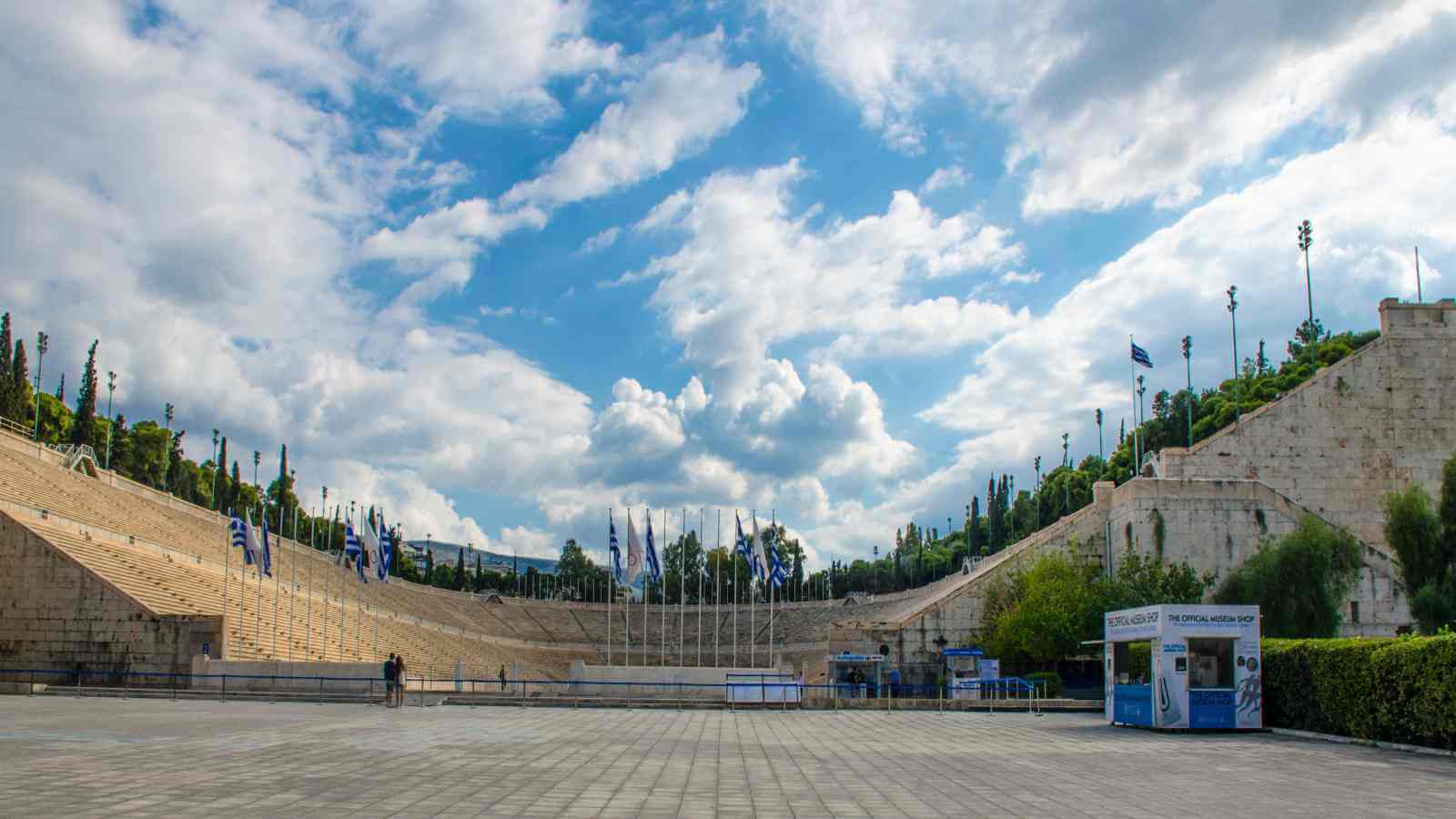
We Need Your Support!
We want to remind you that Athens by Locals is reader-supported. By booking tours, hotels, tickets, and other travel services through the links on our website, you can help us continue providing valuable content and information. Note that we receive a small commission only if you make a booking using our links at the time of your visit. So, if you're not quite ready to book yet, you can save this post and the links and return to make your booking when the time is right. We genuinely appreciate your support and are thrilled to have you in our travel community. Please don't hesitate to reach out if you have any questions or need assistance. Happy travels!
Connected to the Modern Olympic Games, the Panathenaic Stadium is one of Greece’s most popular attractions. Being the only stadium in the world built entirely of marble the Panathenaic Stadium of Athens is commonly called Kallimarmaro (which means beautiful marble).
An architectural masterpiece of great historical importance, the impressive stadium is bound to captivate you. Its story begins in 330/29 BC and spans to modern-day Athens.
Here is all you need to know about the Panathenaic Stadium of Athens.
Among other public works that Lykourgos, a statesman of Athens started commissioning in 338 BC was the construction of a stadium between the Ardettos Hill and the banks of the River Ilissos.
The ancient stadium, which later became the site where the Panathenaic Stadium was built was inaugurated in 330/29 BC when the Great Panathenaia took place for the first time.

Several centuries later, during the Roman period, the orator and sophist Herodes, son of Atticus, erected several buildings throughout Athens.
During that time, he also made significant changes to the stadium Lycourgos had built transforming it into the magnificent architectural masterpiece we see nowadays.

Between AD 139 and 144, the stadium took the current horseshoe shape, and rows of seats of white Pentelic marble were added composing a space for spectators.
Moreover, the track saw several changes. Marble slabs divided the starting line from the finishing line and bifacial herms adorned the track.
In addition, the stadium was decorated with statues of marble, bronze, or gold and the temple of the goddess Tyche/Fortuna.
The Panathenaic Stadium had gained a worldwide reputation and was attracting travelers; however, when Christianity prevailed, the once glorious stadium was abandoned.

Sports events stopped taking place, and his marbles were used to construct other Athenian buildings.
Traces of the ancient Stadium of Herodes Atticus were unraveled in 1836 and 1869 in the excavations directed by Ernst Ziller.
Based on these findings, the stadium was reconstructed with Pentelic marble.
The architectural masterpiece came again into the spotlight in 1896 when it hosted the first modern Olympic Games.
Throughout the 20th century, the Panathenaic stadium hosted several events, and it was, of course, the place of the Marathon race finishing line at the Athens 2004 Olympic Games.
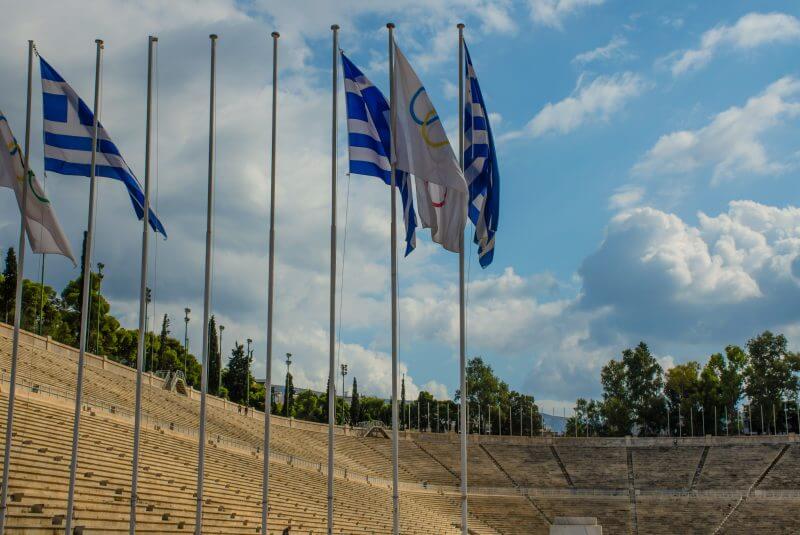
Whether you’re interested in history, architecture, or Greece’s antiquity, the Panathenaic Stadium will captivate you with its story.
It is a symbol of noble competition representing the Olympic Games’ ideals and values and a spectacular landmark.
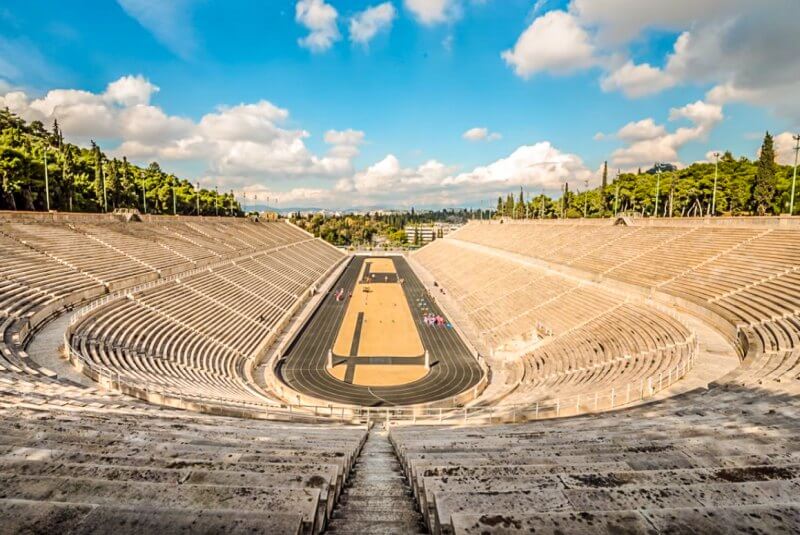
Listen to its story with an audio guide while exploring its breathtaking construction. The audio-guided tour is available in several languages and is provided on-site.
Make sure to explore every corner of the stadium and take as many – Instagram-able – photos as possible.
And it gets better! If you climb on the upper tier of stand 21 you will be able to capture the glorious Acropolis and the Parthenon, the Philopappos Hill, the unique Temple of Olympian Zeus, the Lycabettus Hill, Zappeion, and the National Gardens.
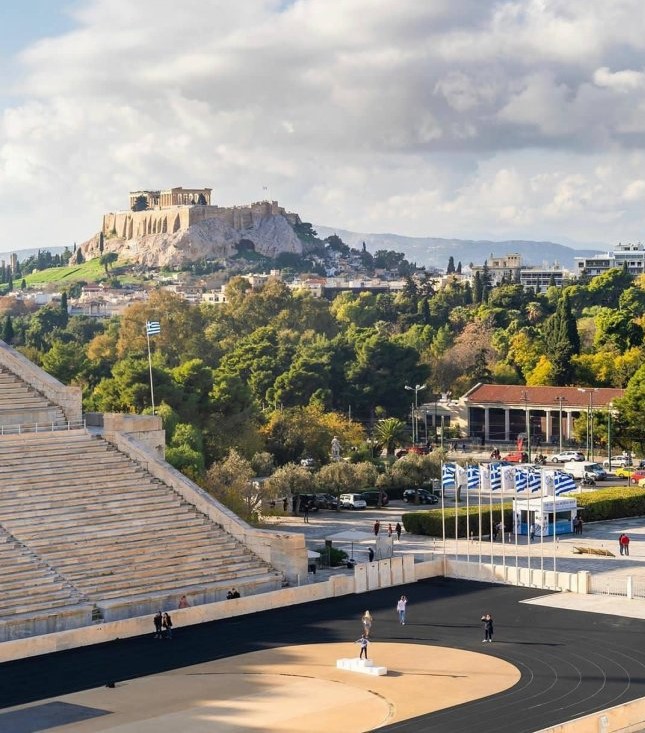
At the Atrium, two big screens present “Memories from Olympic Games: Posters and Torches from 1896 till today” and highlights of the Athens 2004 Olympic Games.
There is a multimedia touchscreen table that allows visitors to play and interact.
Now, if you ask yourself if you can run in the Panathenaic Stadium, the answer is yes. You are allowed to jog in the stadium from 07:30 am until 09:00 am. So, if you’re in the mood for a run put your comfortable (athletic) shoes on and trace the footsteps of historical athletes.

The Panathenaic Stadium is open to visitors from 08:00 – 19:00 from March to October and from 08:00 – 17:00 from November to February.
The general admission ticket is 10,00€ but there is also a reduced price of 5€ for students and visitors over 65 years old.
Visitors with disabilities and children under 6 years old are entitled to free admission.
Generally, the morning and evening hours are the best time to visit the Panathenaic Stadium.
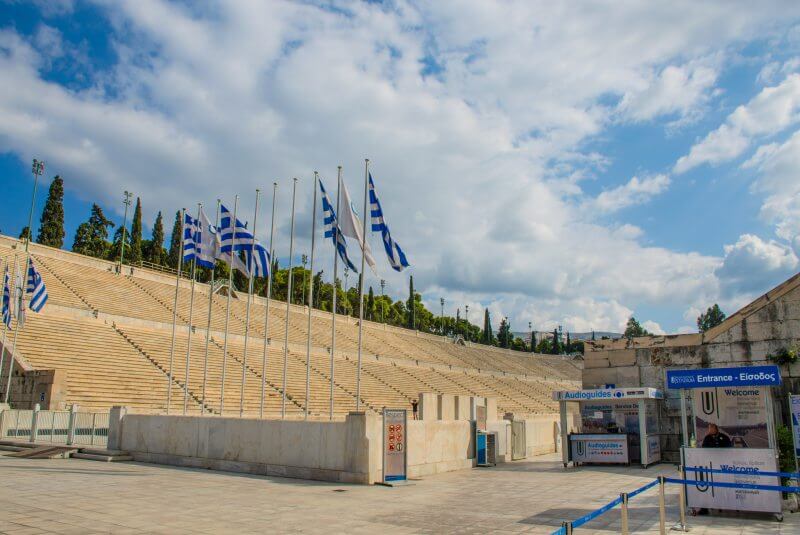
However, in the summer due to Athens’ high temperatures and because of the marble, it can be really hot even in the morning. Therefore it is recommended to visit it as early in the morning as possible or late in the evening.
There is also the official museum shop and a cafe on the premises which operates daily.
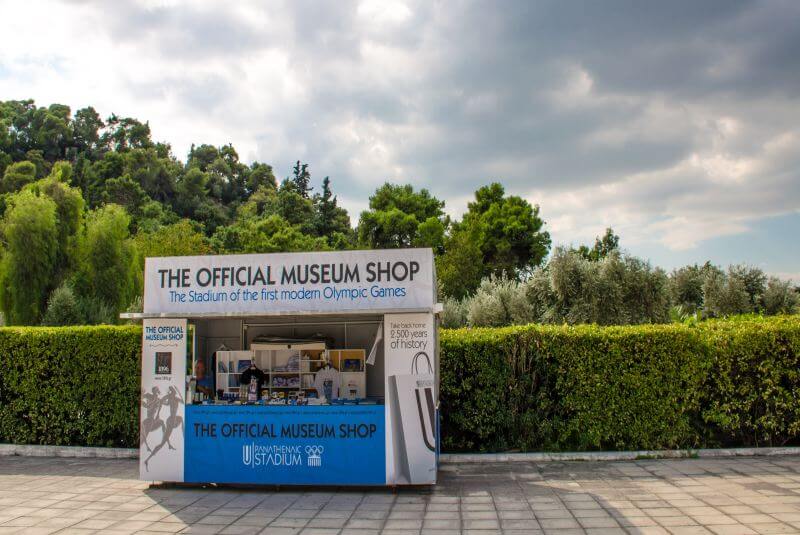
Conveniently located in the heart of Athens city center, the Panathenaic Stadium is easily accessible by metro, bus, taxi, and on foot.
Situated around 1km from the metro stations of Syntagma, Acropolis, and Evangelismos it is quite easy to get here by metro lines 2 and 3.
At a close distance, there are also stations for trolleybuses’ lines 2, 4, 10, and 11 and normal buses’ line 209. Read here our detailed guide on how to get around Athens.
Of course, if you’re roaming in the historic city center, you can easily walk to Panathenaic Stadium. Don’t forget to visit our Athens Maps page and download for free the Map of Athens Center
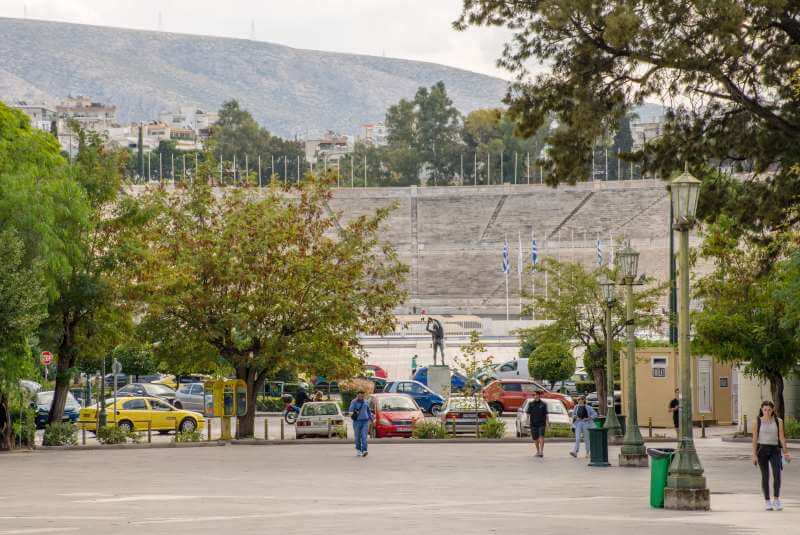
Some of the best restaurants near Panathenaic Stadium:
Spondi is a high-end restaurant serving Mediterranean dishes with a modern twist. It features a vaulted stone dining room and a courtyard.
Featuring an authentic Italian menu, Cupola restaurant is the perfect place for spaghetti and pizza lovers. Its modern and cozy atmosphere is ideal for a relaxed dinner after a long day of sightseeing.
Fish Point restaurant is only a three-minute walk from Panathenaic Stadium. Boasting a spectacular seafood menu and a great wine variety, the modern restaurant will introduce you to traditional Greek cuisine.
Here are some of the best hotels to stay near Panathenaic Stadium:

A stone’s throw away from the Panathenaic Stadium, Pi Athens is surrounded by Athens’s historical landmarks. The elegant micro luxury boutique hotel features only 6 suites, and visitors will also find a garden, a big sitting area, and a roof garden.

Athens Green Apartments offers visitors luxury accommodation that feels like a home away from home. Its location in the serene neighborhood of Mets makes it the perfect spot for exploring Athens on foot.

Zappion Hotel is located on a quiet pedestrian street close to the Panathenaic Stadium. Being recently renovated, the two-star hotel offers all the amenities for a comfortable and budget-friendly stay.
The Panathenaic Stadium is one of the must-visit attractions of Athens.
Located in the heart of the city center, a visit to this famous monument will be the perfect opportunity to combine spending a day sightseeing outdoors with gaining invaluable insight into the city’s culture and the history of the Olympic Games.
A Quick Reminder:
Remember that Athens By Locals is here to guide you with planning the perfect trip to Athens and help you every step along the way. If you didn’t found what you’re looking for, or need any recommendations about your trip to Athens, feel free to contact us and we will do our best to help you. Please be as more detailed as possible regarding your subject so as to help you better.
If you like what you read please scroll down at the end of this page and subscribe to Athens By Locals so next time to receive more articles like this straight forward to your email. Join us on Facebook for comments, photos, and other fun stuff. If you enjoy this article please share it with your friends on Facebook.
Copyright © 2024 Athens By Locals © All rights reserved. No part of this site may be reproduced without our written permission.
Images owned by Athens By Locals. Image Banks or Companies promoted.